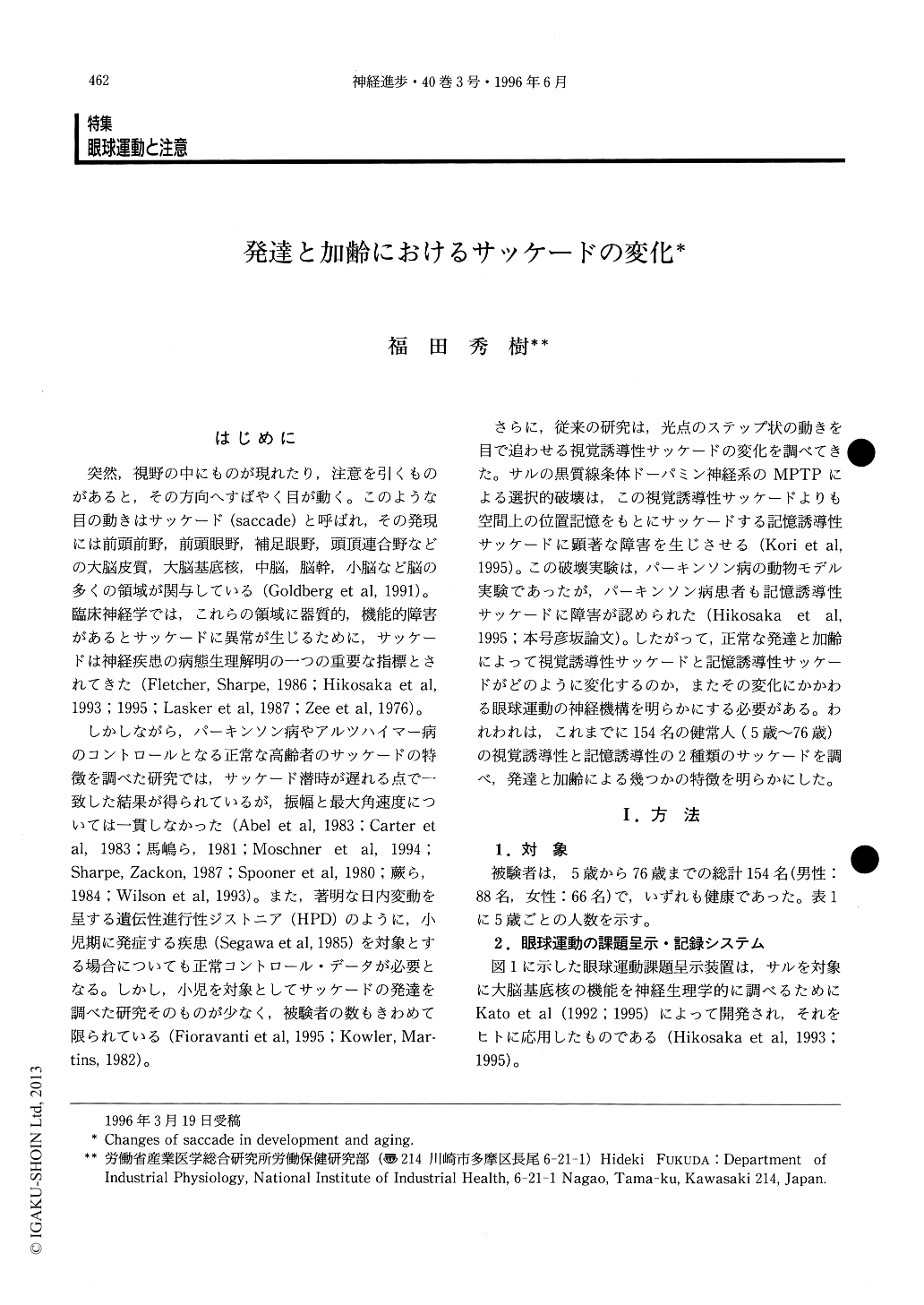Japanese
English
- 有料閲覧
- Abstract 文献概要
- 1ページ目 Look Inside
はじめに
突然,視野の中にものが現れたり,注意を引くものがあると,その方向へすばやく目が動く。このような目の動きはサッケード(saccade)と呼ばれ,その発現には前頭前野,前頭眼野,補足眼野,頭頂連合野などの大脳皮質,大脳基底核,中脳,脳幹,小脳など脳の多くの領域が関与している(Goldbergetal,1991)。臨床神経学では,これらの領域に器質的,機能的障害があるとサッケードに異常が生じるために,サッケードは神経疾患の病態生理解明の一つの重要な指標とされてきた(Fletcher,Sharpe,1986;Hikosakaetal,1993;1995;Laskeretal,1987;Zeeetal,1976)。
しかしながら,パーキンソン病やアルツハイマー病のコントロールとなる正常な高齢者のサッケードの特徴を調べた研究では,サッケード潜時が遅れる点で一致した結果が得られているが,振幅と最大角速度については一貫しなかった(Abeletal,1983;Carteret al,1983;馬嶋ら,1981;Moschneretal,1994;Sharpe,Zackon,1987;Spooneretal,1980;蕨ら,1984;Wilsonetal,1993)。
To examine the effects of development and aging upon the voluntary oculomotor mechanisms in human, we investigated the age dependency of visually guided saccade and memory-guided saccade. Normal subjects (N=154, ages : 5-76 years) were examined. The target positions were at 5, 10, 20, and 30 degrees (left and right). Eye movements were recorded by using DC electro-oculography. A saccade task was designed to induce visually guided saccades, while a delayed saccade task to induce memory-guided saccades.

Copyright © 1996, Igaku-Shoin Ltd. All rights reserved.


